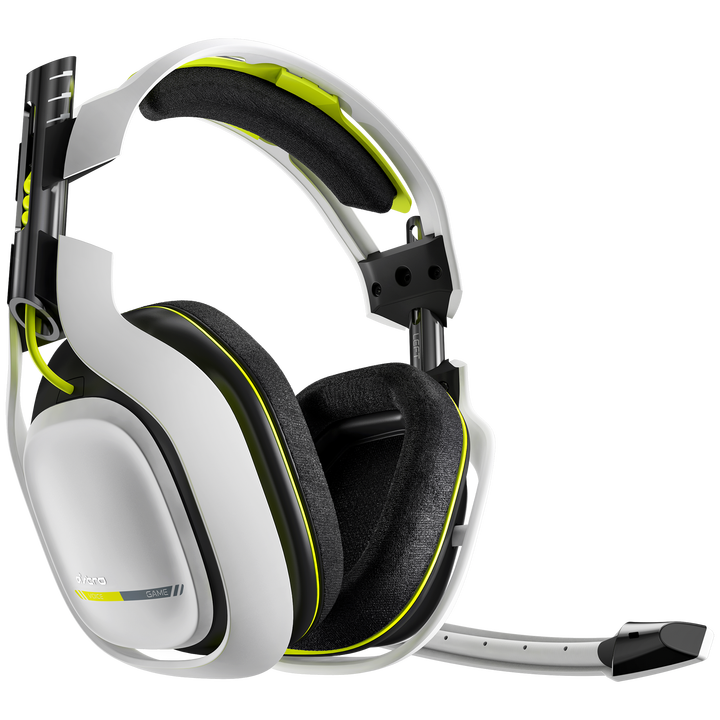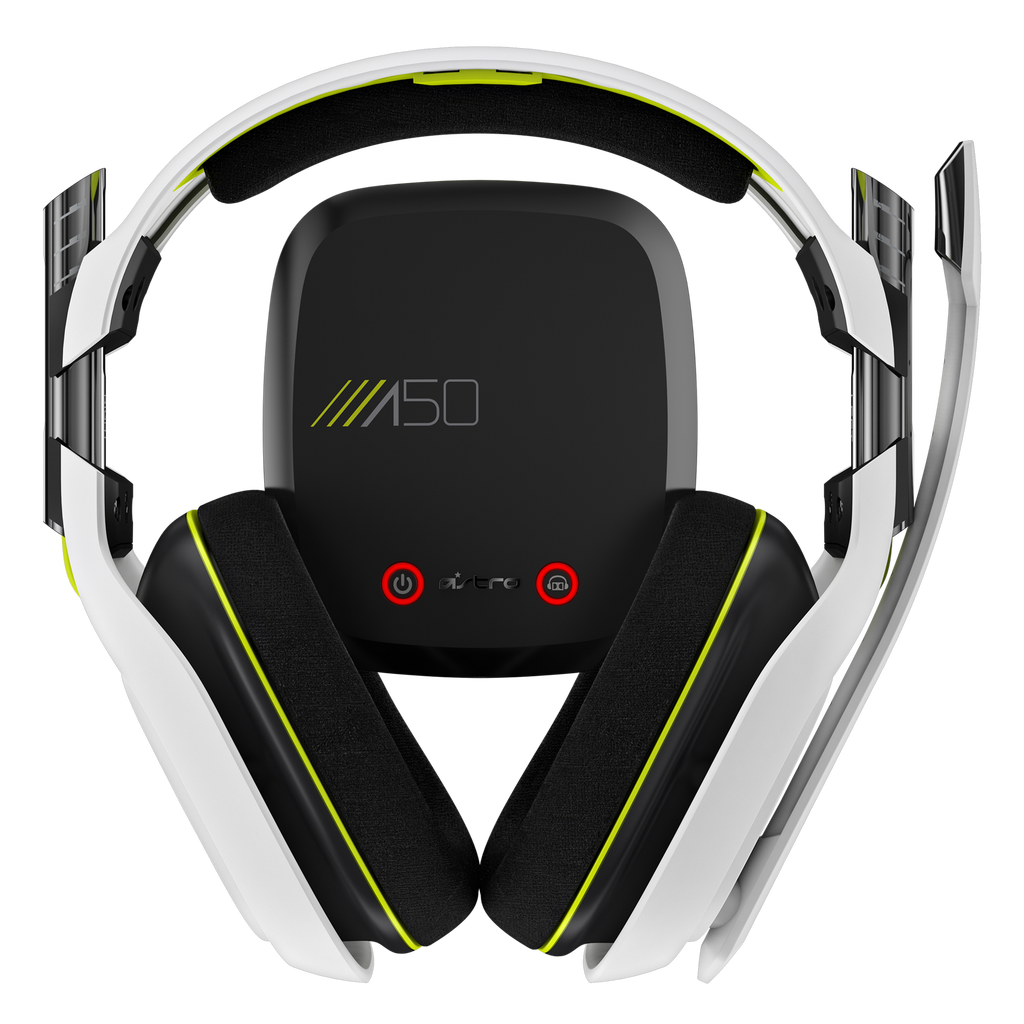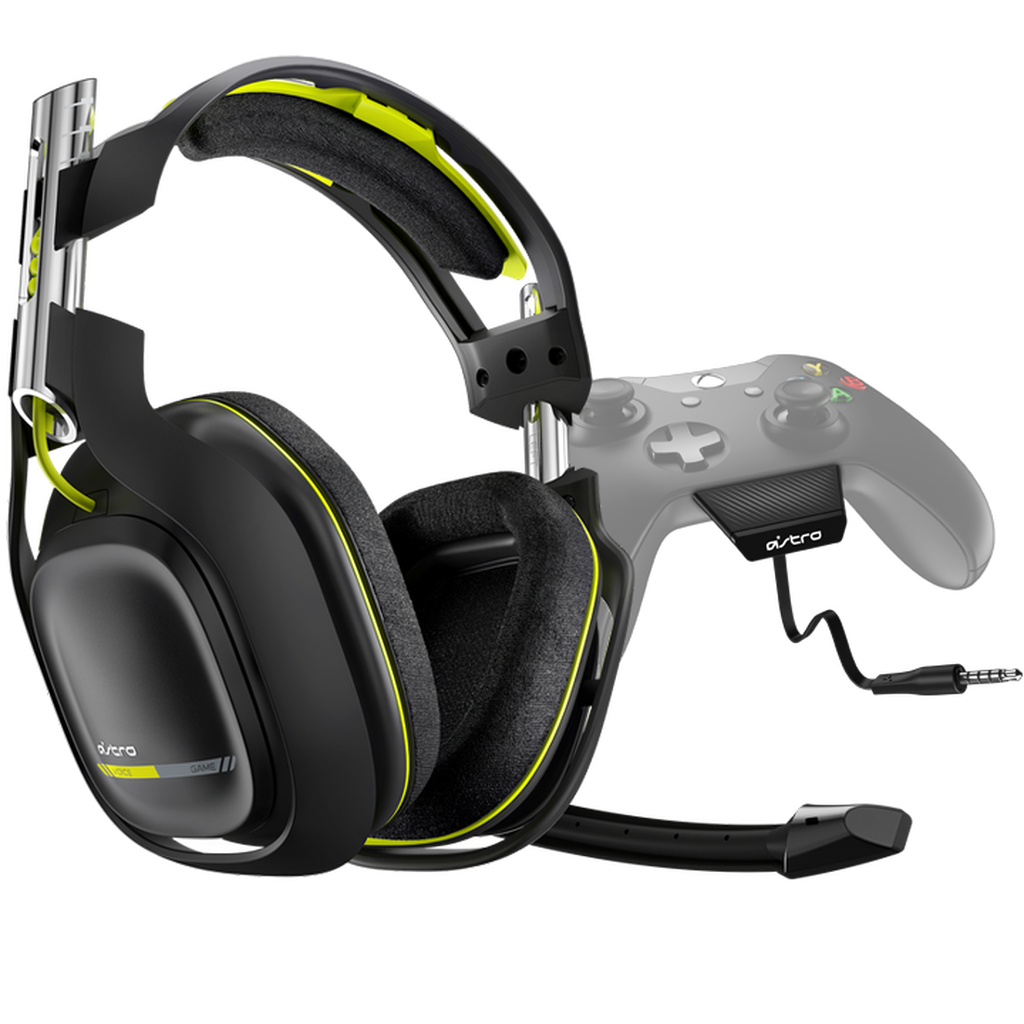An Audio Experience With Astro Gaming's A50 Headset, Hands On
Instead of adding more headphones to its lineup, Astro Gaming updated its currently-existing headphones to stay on track with the latest consoles, including the A50, which comes in five different versions: four for the current and previous Xbox and PlayStation consoles, and one for the PC.
These are the second generation of the company's high-end model, sporting all the necessary bells and whistles indicative of a top-tier product. As it stands, the A50 is one of the better headphones that I've tried in the past few months.
The Contents Within
Within the external packaging is a stylishly-designed box, with sketches of robot schematics etched onto its sides. Opening that reveals the headset and its accompanying accessories: two micro-USB cables, an optical cable, the AG1 cable (which is attached to the Xbox One controller to enable chat functionality) and the MixAmp Tx transmitter.
Astro even included a nice little stand to store the transmitter at the bottom as well as a small clip at the top to place the headset on when it's not in use. Surprisingly, the stand required a little bit of force to assemble, most notably the top clip. I had to push it with enough elbow grease that I thought it would break, but a loud snap into position told me that it was securely attached. If it took that much effort to push it in, I doubt that it won't survive another session if I decided to disassemble it.
The headset itself was a new take on the traditional design. Instead of a solid headband, the top of the A50 was comprised of two parts. The outer edge created a sturdy foundation, while the middle part (which contained felt at the bottom for contact with your head) was attached to the edge in the center. This left a few gaps on the top of the headband for some unknown reason — maybe it's just to look cool.
The earcups themselves were shaped like a square instead of the usual round design we've seen in other headsets. Just like the headband, the interior was felt, which I actually prefer to leather purely because it feels better to my ears. Both earcups can be twisted so you can lay them flat on your chest when it's around your neck.
The adjustment sliders on both sides of the headset also have a unique design. Instead of receding into the chassis, these sliders only go up and down to adjust how tight or loose the headset is around your head. There are five notches etched on each side so you can clearly check that both sides are at the same length.
Get Tom's Hardware's best news and in-depth reviews, straight to your inbox.
The power, equalizer presets and volume control are located near the rear of the right earcup, while the USB port for charging, as well as the jack for the AG1 chat cable, are located on the rear of the left earcup.
The microphone is attached to the left earcup in a pivot design so that it can be brought down when needed and then flipped up (and automatically muted) when it's not needed. As an added bonus, its rubber shell allows for some flexibility in terms of how far or close you want it to your mouth.
As for the right earcup, it can be pressed on either side to control the equalizer so that sound is prioritized for the game, chat, or a balance between both, which should be helpful in multiplayer matches.
The included MixAmp Tx transmitter is small and easily fits in my hand. The rear I/O has space for a micro-USB port, optical in and out ports, a USB port, and an Aux jack. Aside from the A50 name emblazoned on the top, there are also two buttons included that turn on the power (and it pairs the headset if it's disconnected) and toggles the Dolby surround sound on or off. Just like with Turtle Beach's Elite 800X headset, I had to connect one of the micro-USB cables and the optical cable to the back of the Xbox One. Then I had to change some audio settings on the console, turn on the transmitter, and I was ready to go.
Playing Around
The A50 has three audio presets: Media, Core and Pro. The first and third settings are easy enough to discern. Media is meant for watching movies and shows or listening to music. This means that the bass is increased, so beats in music as well as those action-packed scenes in the latest Michael Bay flick are heavily pronounced.
On the other end of the spectrum, Pro is for those obsessed with playing multiplayer games. The bass is still there, but it's significantly reduced. In its place is a rise in treble as well as volume. Everything from your own footsteps to the reload action of your gun can be clearly heard as if you were in a large room with echoes. It puts the bass in the back seat, so you don't get distracted by huge explosions or gunshots around you. Instead, you can hone in on other sounds like enemy chatter and other players sneaking about so you can get the drop on them before they even see you. Like Media, it has its advantages, especially in the online space, but it doesn't get the job done in everyday scenarios.
Then there's Core, which I described last because the best way to think about it is that it strikes a balance between the other two settings. For the Elite 800X, I brought up the Goldilocks problem, where one or more presets are on opposite extremes, and then there's a preset that you find and stick with it because it's just right. This was Core for me. I had a decent amount of both treble and bass to give certain sounds the desired effect. For those who prefer the single-player experience, Core would be your best bet, and then you can easily switch it to Media when you watch your latest binge show on Netflix, or to Pro if you think it will help you get the best score against your friends online. Equalizer presets aren't everyone's favorite feature, but be happy in the fact that there are only three options instead of a need to cycle through a series or modes each with a list of presets included.
Surround sound also plays a factor in the audio experience as it has its pros and cons. It's great when you want to have that feeling as if whatever's happening to the left of your character is perfectly displayed through the left side of your headphones. In a way, surround sound gives players this added sensation of space, as if the action is happening not on the screen but around them. However, this does lead to a few issues, as well.
Certain in-game conversations, which are meant to be heard well without the feature turned on, sound distant, and at some points, completely inaudible, unless you turn and face the speaker directly. This doesn't bode well in certain games when those conversations are key to the game.
Rather than continuing to look forward and anticipating dangers ahead, you have to turn towards the speaking character in order to hear what he or she has to say. As far as immersion goes, this is where surround sound fails. Fortunately, you can turn it off on the transmitter so that you can play with stereo audio.
Too High A Cost?
In the end, it's hard to dislike the Astro A50. It has a unique design, and it felt comfortable around my head to a point where I could wear it for a long gaming session and not feel like I had to constantly adjust it or remove it to give my ears a rest.
In terms of sound, the quality is excellent. The Core setting was able to balance treble and bass to acceptable levels. The Media and Pro levels won't suit everyone, but in the right scenarios, it might become useful, such as watching the latest Marvel movie or competing for the highest prize in competitive eSports.
Then you look at the price. At $300, it seems too much to ask for a headset with three presets, chat capabilities and a transmitter. I can understand a price range between $100 and $200, but anything more and it needs to have something amazing to make me jump and buy it. I really like the A50 and what it has to offer, but looking at its price tag, I would immediately start looking for something cheaper that could provide the same audio quality.
Follow Rexly Peñaflorida II @Heirdeux. Follow us @tomshardware, on Facebook and on Google+.
Rexly Peñaflorida is a freelance writer for Tom's Hardware covering topics such as computer hardware, video games, and general technology news.
-
FITCamaro My experience with Astro:Reply
While Astro makes great headsets, their support is terrible. They love to abandon their products without driver updates after a year or two. They also do not advertise that their headsets only work with Dolby Digital sources. So if you want to use one on PC, you must have a sound card capable of Dolby Digital Live output.
My main reason for buying one was comfort. It is very comfortable. But I won't be buying another one if I need to in the future. -
FITCamaro Let me also add that you must have a sound card capable of Dolby Digital Live output over optical as the transmitter does not have inputs for anything but that.Reply -
Shrapnl The A50 does have a 3.5mm Aux input on the transmitter for non digital input if you are so inclined.Reply
From their manual available online:
"AUX: Auxiliary In. Plug your media device into this port with an
optional 3.5mm cable in order to wirelessly stream audio to
your A50 headset. Intended for use with MP3 players, phones,
and PCs (when optical digital out is not available)." -
jrrdmchls Unless they upped their game on the "Mic Monitoring" Ill still pass.Reply
I had bought the A50s for the Xbox one last December. Loved loved loved!!! the Quality of the surround sound.
But ultimately I had to return these because of the lack of mic monitoring. I got tired of yelling at the TV when chatting with my friends, because I could not hear myself with the headset on.
I did all the recommend firmware updates to the headset and mix amp but still had no mic monitoring. I agree with FITCamaro Astros Support is awful. I wish I would have kept the email they sent me after I contacted them about my issues. They came back with something like "our customers usually get "Used to" The amount of mic Monitoring their product has". I couldn't hear ANY mic monitoring.
My two cents... single player games = Awesome.
chat intensive games = Pass.
Unless things have changed..... PROVE ME WRONG ASTROS! LOL I want to love your product! -
DarkSable Wait, this is a hands-on? How?Reply
You don't compare the sound quality to anything else in the price range, you don't talk much about the comfort... you don't even talk about the A50s vs the A40s, which is a large and important distinction in terms of ease of use vs comfort of use. -
Jeffrey Barone i have a pair of a50s also. top head pad and mic broke astro refused to help me out and i would have paid to get them repaired. i bought the turtle beach elite 800. the 800 has equal surround if not better, concierge line and dual hidden mics. turtle beach had a problem shipping free earplates, i called concierge line aand they said sorry for the wait and sent me a free pair of earplates. so i am very happy i didnt buy another pair of a50 and this attempt at repackaging the a50 is a joke. astro you dog your customers they dog you lol. i hope astro responds one day i did like the a50 5 years ago but they would have to give me a free pair of a60 to win me back.Reply -
Straus I'd echo the same warning others have posted - I own a pair of A40's (2013 edition + mixamp, although the mixamp is now an expensive paperweight) and A50's (first gen), good sound, terrible support from "Astro" (Skullcandy). The one thing you should be able to rely on when over-paying for a "premium" product is half-decent after-market support.Reply
There's still life in both my headsets but I'll never buy Astro again (A40's, developed vibration/rattle in left ear within 6 months of purchase, Astro wanted £100 to "service" them - fixed myself, currently developing the "loose microphone" issue that plagues their headsets - A50's, mic/driver fiasco, wireless connectivity issues, constant problems - awesome when they work but may as well flip a coin each time you pick them up).
Also should be noted, Astro Gaming is now just a brand name owned by Skullcandy (bought from Astro Studios in 2011) - Astro's good reputation entirely belongs to Astro Studios, Skullcandy are milking it dry. -
mRcORNY Astro mades some awesome gaming headset back in the day, but laterly seem to be lagging behind the competition. Your review solidifies that assumption. I've been looking for some good wireless gaming set around $300 max and can't decide between Logitech G930 or Corsair H2100, both of these are reviewed here http://headphonesaddict.com/best-wireless-gaming-headset/Reply
Which would you pick?
Thanks for your help. :)


